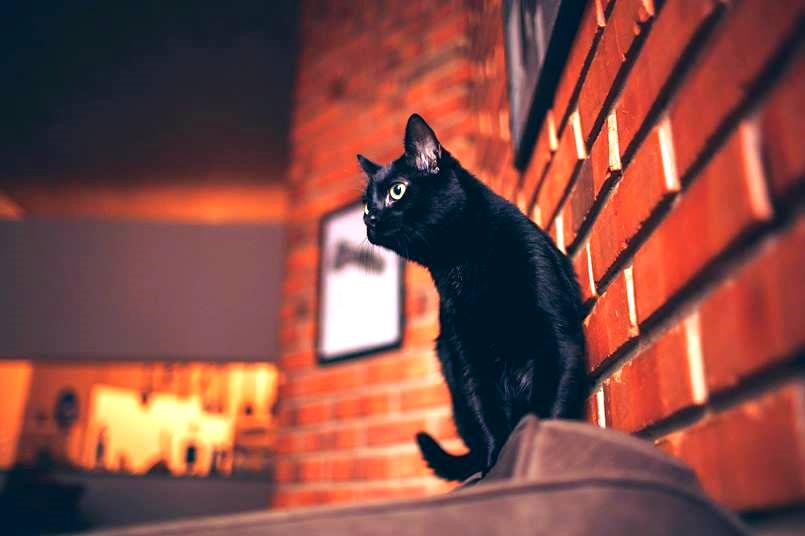In this Article
Cats are unique creatures with instincts deeply rooted in their evolutionary history as agile, solitary hunters. Unlike dogs or other domesticated animals, cats retain a strong connection to their wild ancestors, such as the African wildcat (Felis lybica), which influences their behavior and environmental needs. A critical aspect of a cat's well-being is access to vertical space - areas such as shelves, scratching posts, or high perches where they can climb, rest, and observe their surroundings. Veterinary experts and feline behaviorists emphasize that vertical space is not a luxury, but a necessity for a cat's physical and psychological health. This article explores why vertical space is essential for cats, drawing on veterinary insights, scientific research, and expert opinion to highlight its importance. It also addresses the practical implications for cat owners to create enriched environments that satisfy their pets' instincts.
The Evolutionary Basis for Vertical Space
Cats’ need for vertical space stems from their evolutionary adaptations as both predators and prey. In the wild, their ancestors used elevated vantage points to survey their territory for food or threats. Climbing trees or rocky outcrops allowed them to spot prey, avoid predators, and establish safe resting spots. According to Dr. Sharon Crowell-Davis, a veterinary behaviorist at the University of Georgia, “Cats are arboreal in their instincts. Even domestic cats retain the drive to seek height as a means of safety and control over their environment.” This instinct is evident in how cats in multi-pet households or urban environments gravitate toward high places like countertops, shelves, or windowsills.
Vertical space also aligns with a cat’s territorial behavior. Cats are semi-social animals that establish territories to feel secure. Dr. John Bradshaw, a feline behavior expert and author of Cat Sense, notes, “For a cat, height is a form of territory. A high perch is a safe zone where they can monitor their domain without direct confrontation.” This need for control and observation is particularly pronounced in multi-cat households, where vertical spaces can reduce competition and stress by allowing cats to claim their own areas.
Physical benefits of vertical space
Access to vertical space promotes physical health by encouraging exercise and maintaining agility. Cats are naturally athletic, with strong, flexible bodies designed for climbing and jumping. Providing opportunities to use these skills helps prevent obesity, a common problem in indoor cats. According to the American Veterinary Medical Association (AVMA), obesity affects approximately 60% of domestic cats in the United States, contributing to conditions such as diabetes, arthritis and heart disease. Dr. Susan Nelson, a veterinarian at Kansas State University, explains, "Climbing and jumping exercise a cat's muscles and joints, keeping them limber and helping to manage weight. Vertical structures such as cat trees are great for encouraging natural movement."
Vertical spaces also support a cat's skeletal and muscular health. Jumping to and from elevated surfaces strengthens core muscles and improves coordination, which is especially important for aging cats. Dr. Margie Scherk, a feline medicine specialist, says, "As cats age, maintaining mobility is critical to preventing joint stiffness. Vertical spaces, when designed with appropriate heights and soft landings, can keep older cats active without overexertion." For kittens, climbing helps develop motor skills and balance, preparing them for adulthood.
Psychological and Behavioral Benefits
In addition to physical health, vertical space plays a critical role in a cat's mental well-being. Cats are prone to stress and anxiety, especially in environments that lack stimulation or feel unsafe. Elevated perches provide a sense of security and allow cats to retreat from perceived threats, whether it's a loud noise, a visitor or another pet. Dr. Tony Buffington, a veterinary behaviorist at Ohio State University, points out, "Cats need a three-dimensional environment to feel in control. Vertical space gives them a place to escape and relieve stress, which reduces behaviors such as aggression or inappropriate elimination".
In multi-cat households, vertical space is an important tool for reducing territorial conflicts. Cats form hierarchies, and subordinate cats may feel stressed if they cannot escape from dominant individuals. Dr. Mikel Delgado, a certified feline behaviorist, explains, "Vertical territory allows cats to coexist peacefully by giving each cat its own space. A cat tree with multiple levels can prevent fights and promote harmony. This is especially important in homes with limited floor space, where vertical structures maximize usable territory.
Vertical spaces also combat boredom, a common cause of destructive behaviors such as furniture scratching and overgrooming. Enrichment through climbing and exploration stimulates a cat's mind and satisfies her curiosity and hunting instincts. Dr. Kelly Ballantyne, a veterinary behaviorist, notes, "Cats are naturally curious. Lack of vertical space can lead to frustration, which can manifest as destructive behavior. Providing perches and shelves keeps their minds busy.
The Role of Vertical Space in the Indoor Environment
Indoor cats face unique challenges due to their confined environment. Unlike outdoor cats that can climb trees or fences, indoor cats rely on their owners to provide vertical opportunities. Without these, they may become stressed or sedentary. Veterinary guidelines from the American Association of Feline Practitioners (AAFP) recommend creating "cat-friendly" homes with ample vertical space to mimic a cat's natural habitat. According to Dr. Ilona Rodan, co-author of the AAFP guidelines, "Vertical space is a cornerstone of environmental enrichment for indoor cats. It allows them to express natural behaviors such as climbing, perching, and observing, which are critical to their emotional health."
Windowsills, cat trees, and wall shelves are practical ways to incorporate vertical space. These structures should be sturdy, offer soft surfaces for comfort, and be strategically placed to provide views of the outdoors or high-traffic areas of the home. Dr. Rodan adds, "Cats love to see the world from a high vantage point. A perch near a window not only provides mental stimulation, but also reduces anxiety by giving them a sense of control".
Addressing common misconceptions
Some cat owners believe that vertical space is unnecessary if their cat seems content lying on the floor or furniture. However, veterinarians warn that a lack of visible discomfort does not mean a cat's needs are being met. Dr. Lauren Demos, a feline specialist, explains, "Cats are masters at hiding discomfort. Just because a cat isn't acting out doesn't mean they're thriving. Vertical space fulfills instincts that they may not be expressing outwardly.
Another misconception is that vertical space is only for young, agile cats. While kittens and adult cats climb easily, senior cats also benefit from accessible vertical space. Low platforms or ramps can help older cats reach elevated areas without straining their joints. Dr. Scherk advises, "For senior cats, vertical space should be tailored to their mobility. A series of low, padded platforms can provide the same psychological benefits as a tall scratching post".
Practical tips for providing vertical space
Veterinarians and feline behaviorists offer several recommendations for incorporating vertical space into a cat's environment:
-
Invest in a sturdy cat tree: Choose a multi-level cat tree with scratching posts, platforms, and comfortable resting areas. Make sure it's stable to prevent tipping.
-
Install wall shelves: Wall shelves or climbing systems allow cats to navigate vertically without taking up floor space. Place them in a zigzag pattern to create a climbing path.
-
Use Window Perches: Suction cup window perches or hammocks provide a high vantage point for cats to view the outdoors.
-
Repurpose Furniture: Bookshelves or sturdy cabinets can double as cat perches if they're safe and accessible.
-
Consider Safety: Make sure perches are secure and have soft landings to prevent injury. For older cats, add ramps or low steps.
Dr. Delgado suggests, "Pay attention to your cat's preferences. Some cats love high perches, while others prefer mid-level platforms. Experiment with different heights and textures to see what works.
Potential risks and how to mitigate them
While vertical space is beneficial, it also carries risks, especially for cats that are prone to falls or injury. The "high-rise syndrome," described by Dr. Gordon Robinson in 1976, refers to injuries sustained by cats who fall from significant heights, such as windows or balconies. Dr. Robinson notes, "Cats can survive falls from great heights due to their ability to right themselves in mid-air, but injuries such as broken bones or internal trauma are common. To mitigate this, owners should install window screens and make sure perches are stable.
For cats with mobility issues, such as arthritis or neurological conditions, high perches may pose a risk. Dr. Nelson advises, "Consult a veterinarian to assess your cat's physical abilities before encouraging climbing. For some cats, low platforms are safer and just as effective.
Conclusion
Vertical space is a fundamental aspect of a cat's environment, supporting her physical health, mental well-being, and natural instincts. Veterinary experts agree that providing elevated perches, scratching posts, or shelves is essential for indoor cats to thrive. As Dr. Crowell-Davis summarizes, "A cat's world is three-dimensional. Denying them vertical space is like denying a bird the sky. By understanding and accommodating this need, cat owners can improve their pets' quality of life, reduce stress, and create a harmonious home environment. Whether through a towering scratching post or a simple window perch, vertical space allows cats to express their innate behaviors and is an essential part of responsible cat ownership.

